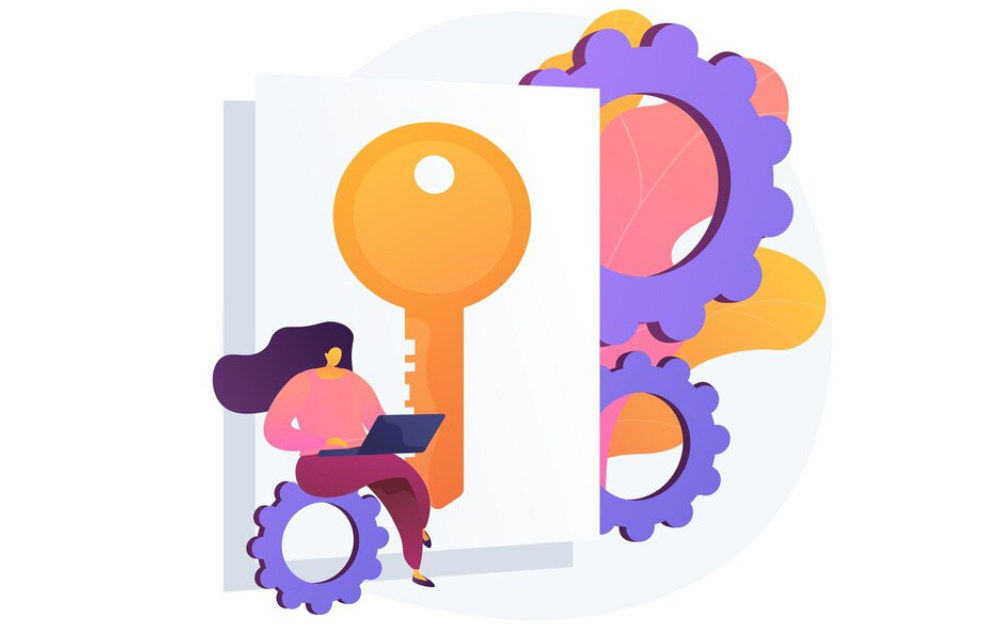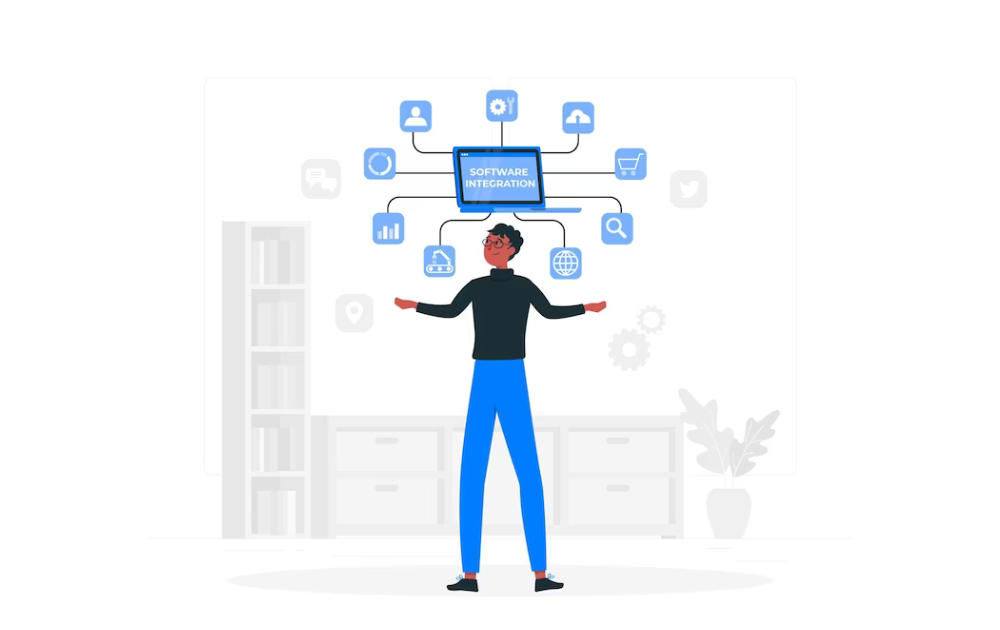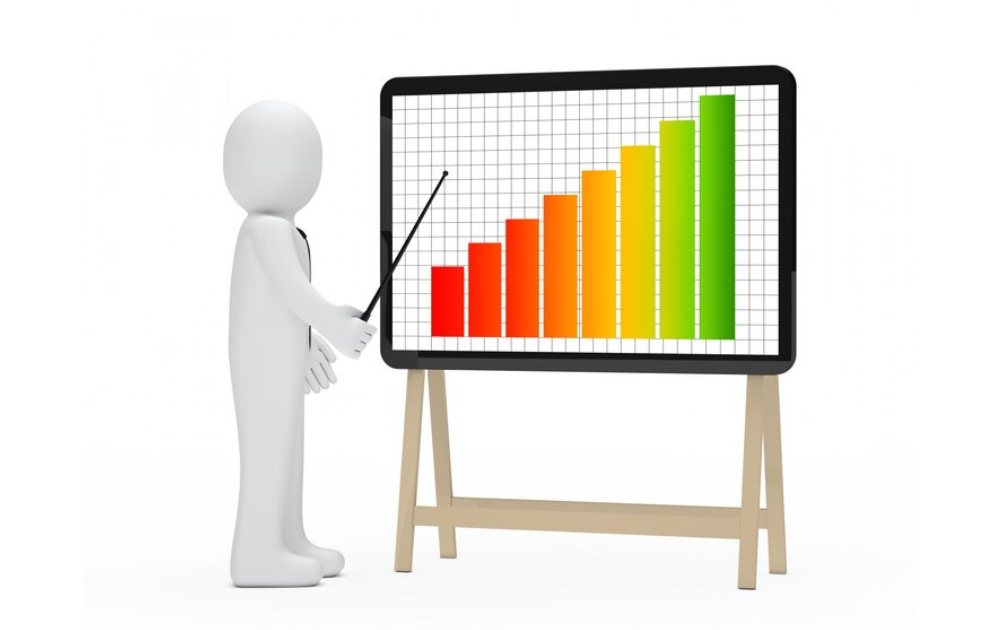In today’s rapidly evolving business landscape, efficient IT procurement stands as a cornerstone for organizational success. From sourcing essential hardware to acquiring cutting-edge software solutions, the process of IT procurement plays a pivotal role in driving operational efficiency and strategic growth. However, navigating the complexities of IT procurement can be daunting, with challenges ranging from vendor management to regulatory compliance.
In this comprehensive guide, we delve into the intricacies of IT procurement, offering insights, strategies, and best practices to maximize business efficiency. Whether you’re a seasoned procurement professional or a newcomer to the field, this article promises to equip you with the knowledge and tools needed to optimize your IT procurement processes and unlock new avenues for success.
IT Procurement Power: Supercharge Business Efficiency

Understanding IT Procurement
IT procurement, often referred to as Information Technology procurement, is the process of acquiring goods and services related to technology for an organization’s operational needs. Understanding the fundamentals of IT procurement is essential for effectively managing the acquisition of IT assets and services. Let’s delve into the key aspects of understanding IT procurement:
1. Definition and Scope:
IT procurement encompasses the sourcing, purchasing, and management of hardware, software, and services required to support an organization’s IT infrastructure and operations. This includes everything from computers, servers, and networking equipment to enterprise software licenses and cloud services.
2. Objectives of IT Procurement:
The primary objectives of IT procurement are to ensure the timely acquisition of IT resources, optimize costs, and mitigate risks associated with technology investments. Additionally, IT procurement aims to support organizational goals by aligning technology purchases with business needs and strategic objectives.
3. Role and Responsibilities:
IT procurement professionals play a crucial role in the procurement process, from identifying technology requirements to negotiating contracts and managing vendor relationships. Their responsibilities may include conducting market research, evaluating vendor proposals, and ensuring compliance with regulatory requirements and organizational policies.
4. Importance of Effective IT Procurement:
Effective IT procurement is essential for organizations to maintain a competitive edge in today’s digital landscape. By streamlining procurement processes, organizations can optimize costs, improve operational efficiency, and accelerate time-to-market for new products and services. Moreover, strategic IT procurement enables organizations to leverage technology as a strategic enabler for innovation and growth.
5. Key Considerations in IT Procurement:
Several factors influence IT procurement decisions, including budget constraints, technological requirements, vendor capabilities, and regulatory compliance. Organizations must carefully evaluate these factors to make informed procurement decisions that align with their business objectives and budgetary constraints.
6. Evolving Trends in IT Procurement:
The field of IT procurement is constantly evolving, driven by advancements in technology, changes in market dynamics, and shifts in organizational priorities. Emerging trends such as cloud computing, artificial intelligence, and sustainable procurement practices are reshaping the way organizations approach IT procurement.
7. Best Practices in IT Procurement:
Adopting best practices in IT procurement is critical for maximizing value and minimizing risks. This includes establishing clear procurement policies and procedures, fostering strategic vendor relationships, leveraging technology for automation and efficiency, and continuously monitoring and evaluating procurement performance.
By understanding the fundamentals of IT procurement and adopting best practices, organizations can effectively manage their technology investments, drive innovation, and achieve their business objectives in today’s digital era. In the subsequent sections, we will explore the challenges and opportunities in IT procurement and discuss strategies for optimizing procurement processes.

Challenges and Opportunities in IT Procurement
In the dynamic landscape of IT procurement, organizations encounter a myriad of challenges alongside opportunities for improvement and innovation. Understanding these dynamics is crucial for devising effective procurement strategies and driving sustainable growth. Let’s explore the key challenges and opportunities in IT procurement:
Challenges:
- Complex Vendor Landscape: The proliferation of technology vendors introduces complexity into the procurement process, making it challenging to evaluate and select the right partners for IT solutions.
- Cost Management: Balancing cost considerations while ensuring quality and functionality of IT products and services poses a significant challenge for procurement professionals. Budget constraints may limit options, leading to trade-offs between price and value.
- Regulatory Compliance: Compliance with industry regulations and standards adds a layer of complexity to IT procurement. Failure to adhere to regulatory requirements can result in legal repercussions and reputational damage.
- Supply Chain Disruptions: Disruptions in the global supply chain, such as natural disasters or geopolitical events, can impact the availability and delivery of IT products and services, leading to delays and increased costs.
- Legacy Systems Integration: Integrating new IT solutions with existing legacy systems can be complex and time-consuming, posing compatibility and interoperability challenges.
Opportunities:
- Strategic Vendor Partnerships: Developing strategic partnerships with technology vendors enables organizations to leverage economies of scale, access innovative solutions, and negotiate favorable terms and pricing.
- Data-Driven Decision Making: Harnessing the power of data analytics enables procurement professionals to make informed decisions, optimize procurement processes, and identify cost-saving opportunities.
- Agile Procurement Practices: Adopting agile procurement methodologies allows organizations to respond swiftly to changing business needs and market dynamics, fostering innovation and competitive advantage.
- Supplier Diversity and Sustainability: Embracing supplier diversity initiatives and sustainable procurement practices not only fosters social responsibility but also mitigates risks associated with dependency on a single vendor or unsustainable practices.
- Digital Transformation: Embracing digital transformation initiatives such as cloud computing, automation, and e-procurement platforms streamlines procurement workflows, enhances collaboration, and improves efficiency and transparency.
By addressing these challenges and seizing the opportunities presented by IT procurement, organizations can enhance their agility, resilience, and competitiveness in today’s digital economy. In the subsequent sections, we will delve deeper into strategies and best practices for overcoming challenges and leveraging opportunities in IT procurement.

Key Components of Successful IT Procurement
Successful IT procurement relies on several key components working together cohesively to ensure the acquisition of the right technology resources at the right time and cost. Understanding and implementing these components is essential for organizations to streamline their procurement processes and achieve optimal outcomes. Let’s explore the key components of successful IT procurement:
1. Comprehensive Needs Assessment:
Before initiating the procurement process, organizations must conduct a comprehensive needs assessment to identify their IT requirements. This involves understanding current and future business needs, assessing existing technology infrastructure, and soliciting input from key stakeholders across the organization.
2. Strategic Vendor Selection:
Selecting the right vendors is critical to the success of IT procurement initiatives. Organizations should conduct thorough vendor evaluations based on factors such as vendor reputation, product quality, pricing, support services, and alignment with organizational goals and values.
3. Contract Negotiation and Management:
Effective contract negotiation is essential for securing favorable terms and conditions that meet the organization’s needs while mitigating risks. Procurement professionals should negotiate pricing, warranties, service level agreements (SLAs), and other contractual terms to ensure transparency and accountability.
4. Regulatory Compliance and Risk Management:
Compliance with regulatory requirements and risk management considerations are paramount in IT procurement. Organizations must ensure that their procurement practices adhere to relevant laws, regulations, and industry standards to avoid legal and financial repercussions. Additionally, proactive risk management strategies should be employed to identify, assess, and mitigate potential risks throughout the procurement process.
5. Budget Planning and Cost Control:
Budget planning and cost control are integral aspects of successful IT procurement. Organizations should develop clear budgetary guidelines and allocate resources effectively to maximize value and minimize unnecessary expenditures. Cost control measures, such as competitive bidding, volume discounts, and vendor negotiations, should be implemented to optimize costs without compromising quality or performance.
6. Lifecycle Management:
Managing IT assets throughout their lifecycle is essential for maximizing their value and minimizing total cost of ownership (TCO). From procurement and deployment to maintenance, upgrades, and disposal, organizations should implement robust lifecycle management processes to ensure assets are utilized efficiently and retired responsibly when no longer needed.
7. Continuous Improvement and Evaluation:
Continuous improvement is key to enhancing IT procurement processes and driving organizational success. Organizations should regularly evaluate their procurement practices, solicit feedback from stakeholders, and identify opportunities for optimization and innovation. By fostering a culture of continuous improvement, organizations can adapt to evolving business needs and market conditions effectively.
By integrating these key components into their IT procurement processes, organizations can optimize their procurement practices, mitigate risks, and achieve strategic objectives. In the subsequent sections, we will delve deeper into best practices for implementing each component and overcoming common challenges in IT procurement.
Best Practices for Implementing IT Procurement
Implementing best practices in IT procurement is crucial for organizations to optimize their procurement processes, maximize value, and mitigate risks. By adopting industry-leading practices, organizations can streamline procurement workflows, improve efficiency, and achieve better outcomes. Let’s explore some of the best practices for implementing IT procurement:
1. Establish Clear Procurement Policies and Procedures:
Organizations should develop and document clear procurement policies and procedures that outline the procurement process, roles and responsibilities, approval thresholds, and compliance requirements. These policies should be communicated effectively to all stakeholders and regularly reviewed and updated to reflect changes in regulations and organizational needs.
2. Foster Strategic Vendor Relationships:
Establishing robust connections with vendors is crucial for effective IT procurement. Organizations should proactively engage with vendors, communicate their needs and expectations clearly, and negotiate mutually beneficial agreements. Maintaining open lines of communication and collaborating with vendors on strategic initiatives can help organizations secure preferential pricing, access to new technologies, and superior support services.
3. Leverage Technology for Automation and Efficiency:
Leveraging technology solutions such as e-procurement platforms, contract management software, and spend analysis tools can streamline procurement processes, improve efficiency, and enhance visibility and control over procurement activities. Automation of routine tasks such as purchase requisitions, approvals, and invoice processing can reduce manual errors, accelerate cycle times, and free up resources for more strategic activities.
4. Implement Robust Supplier Evaluation and Performance Management:
Organizations should establish criteria for evaluating and selecting suppliers based on factors such as product quality, reliability, financial stability, and track record. Once vendors are selected, performance should be regularly monitored and evaluated against predefined metrics and KPIs. Feedback mechanisms such as supplier scorecards and periodic reviews should be utilized to identify areas for improvement and recognize top-performing vendors.
5. Ensure Transparency and Accountability:
Transparency and accountability are essential principles in IT procurement. Organizations should ensure that procurement processes are conducted with integrity, fairness, and adherence to ethical standards. Clear documentation, audit trails, and governance mechanisms should be established to promote transparency and accountability throughout the procurement lifecycle.
6. Promote Collaboration and Cross-Functional Alignment:
Effective IT procurement requires collaboration and alignment across various departments and stakeholders within the organization. Procurement professionals should work closely with IT, finance, legal, and other relevant departments to understand their needs and objectives, solicit input and feedback, and align procurement activities with organizational goals and priorities.
7. Continuous Monitoring and Improvement:
Continuous monitoring and improvement are essential for optimizing IT procurement processes and driving ongoing value. Organizations ought to consistently assess and scrutinize procurement performance data, pinpointing opportunities for enhancement, and executing corrective measures as necessary. By embracing a culture of continuous improvement, organizations can adapt to changing market conditions, technological advancements, and business needs effectively.
By incorporating these best practices into their IT procurement processes, organizations can enhance efficiency, minimize risks, and achieve better outcomes. In the subsequent sections, we will explore specific strategies and techniques for implementing each best practice and overcoming common challenges in IT procurement.




